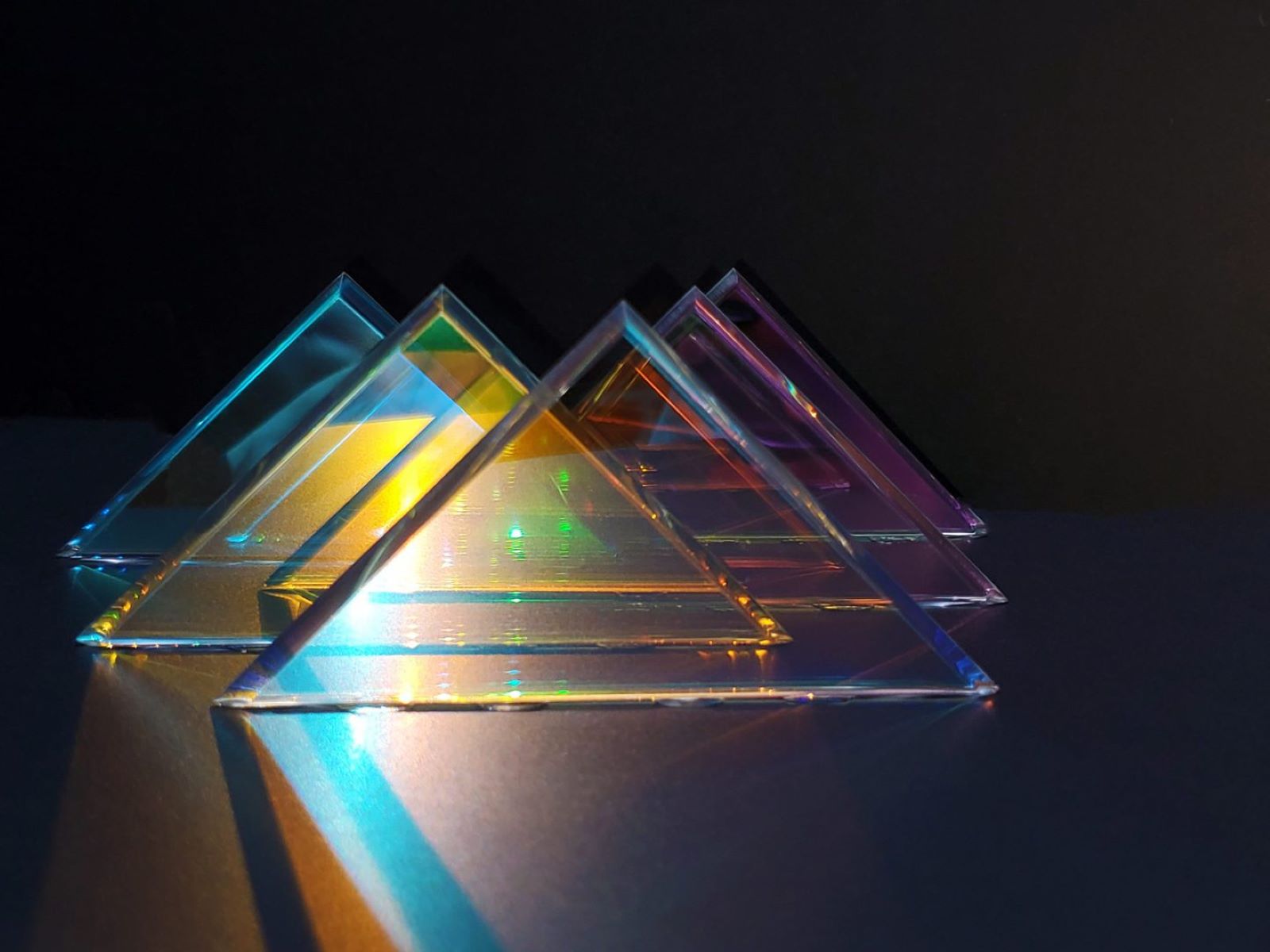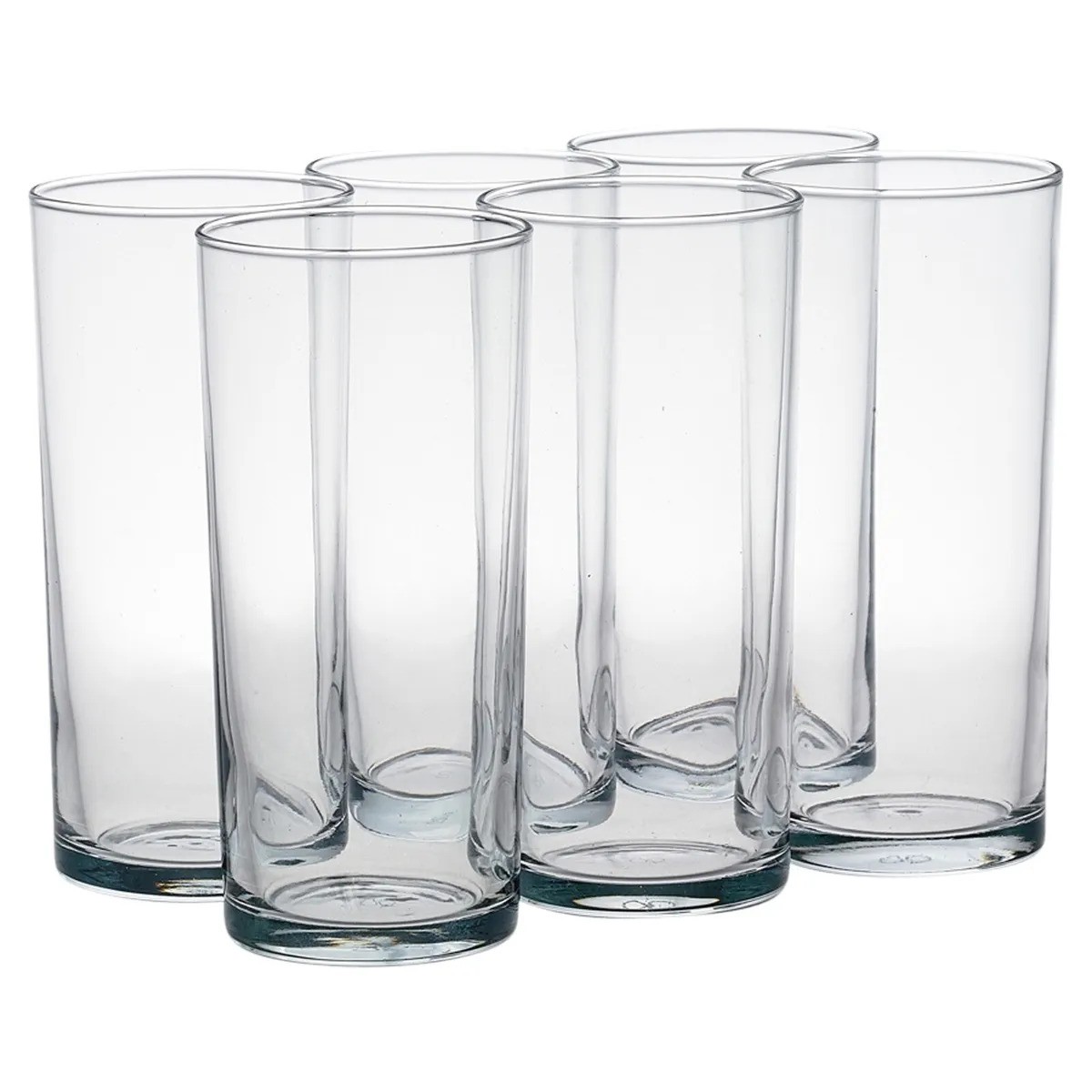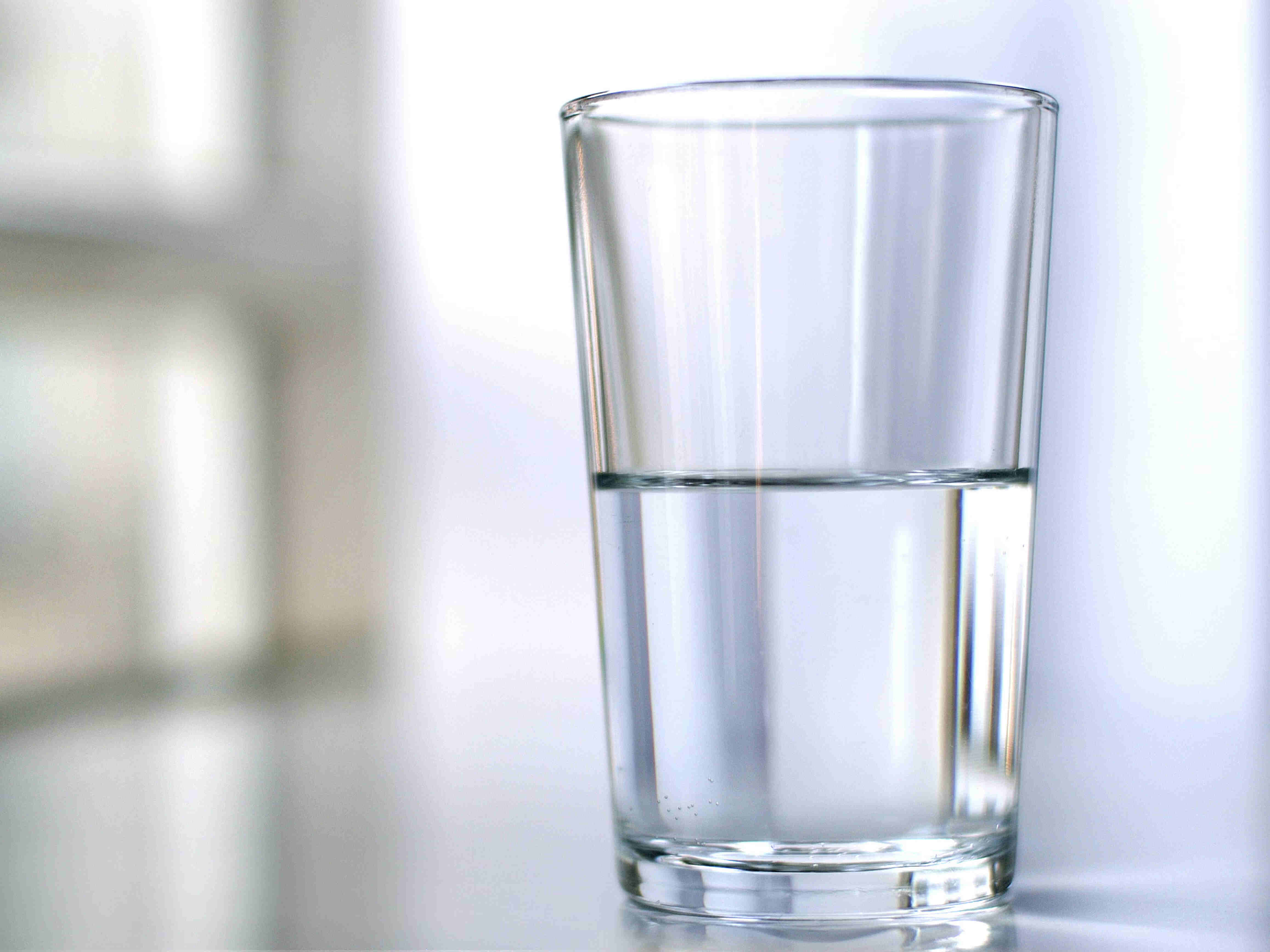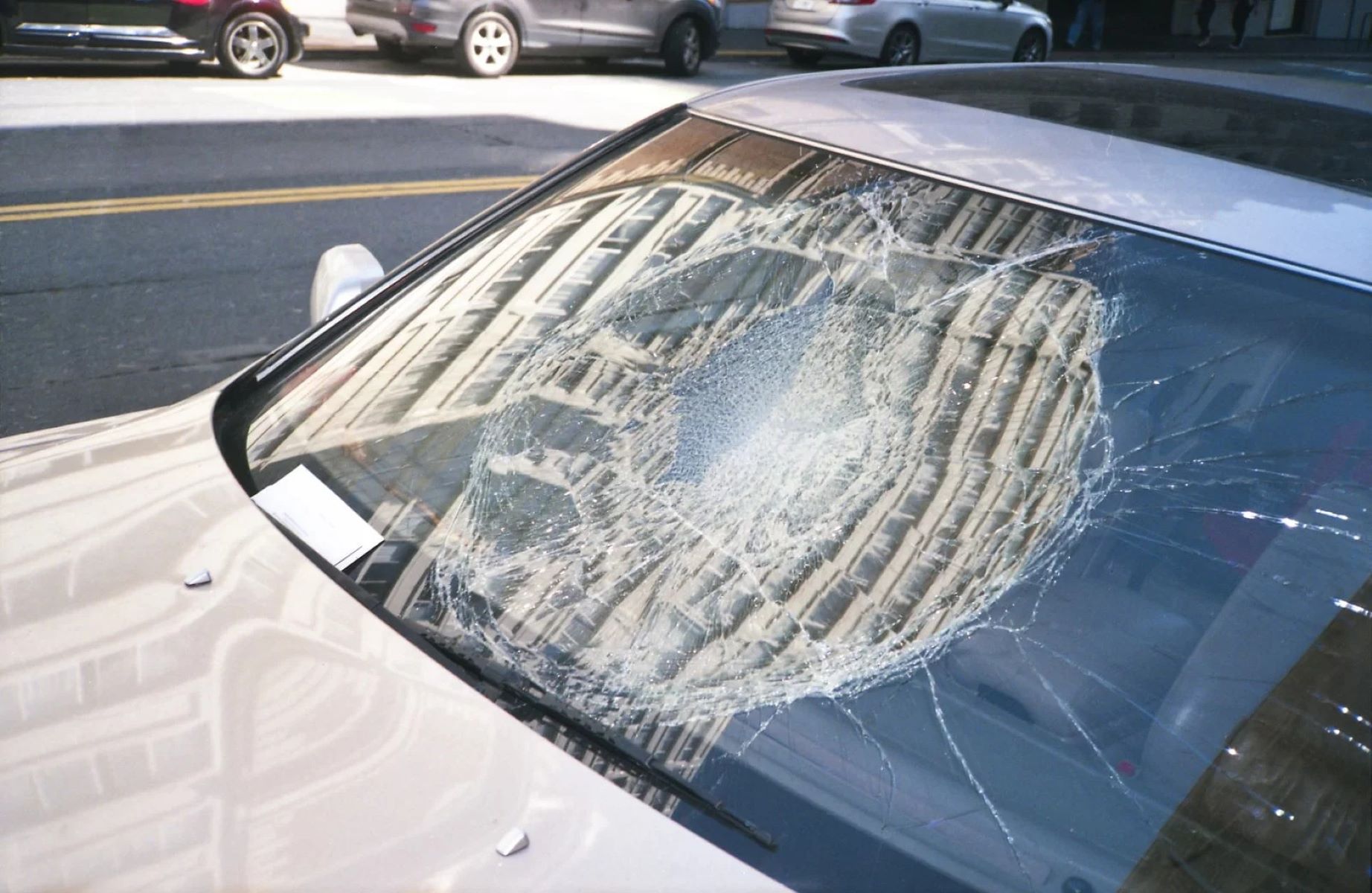Home>Furniture & Design>Interior Design Trends>What Does Dichroic Glass Mean


Interior Design Trends
What Does Dichroic Glass Mean
Modified: April 22, 2024
Discover the meaning of dichroic glass and its impact on interior design trends. Explore the beauty and versatility of this unique material.
(Many of the links in this article redirect to a specific reviewed product. Your purchase of these products through affiliate links helps to generate commission for Storables.com, at no extra cost. Learn more)
Introduction
Dichroic glass, with its mesmerizing play of colors and light, has captured the imagination of artists, designers, and enthusiasts alike. This unique material has found its way into various applications, from jewelry and decorative art to architectural installations. Understanding the essence of dichroic glass involves delving into its intriguing properties, history, manufacturing process, and diverse uses.
The allure of dichroic glass lies in its ability to reflect and transmit multiple colors, creating a stunning visual effect that changes with the angle of view and the surrounding light. This captivating characteristic makes dichroic glass a sought-after medium for adding vibrancy and depth to artistic creations and functional designs.
As we embark on a journey to explore the world of dichroic glass, we will uncover the intricacies of its production, the historical significance that has shaped its evolution, and the myriad ways in which it enriches our surroundings. Join us as we unravel the mysteries and marvels of dichroic glass, immersing ourselves in its radiant beauty and boundless potential.
Key Takeaways:
- Dichroic glass is a captivating material that reflects one color while transmitting another, creating a mesmerizing visual effect. It’s used in jewelry, art, and architecture to add vibrancy and depth to designs.
- The history of dichroic glass dates back to ancient civilizations, but its modern resurgence has made it a beloved choice for artists and designers. Its manufacturing process involves precise layering of metal oxides to achieve its iridescent properties.
Read more: What Is Dichroic Glass
Definition of Dichroic Glass
Dichroic glass, derived from the Greek word "dichroos" meaning two-colored, is a captivating material renowned for its unique optical properties. At its core, dichroic glass is a type of glass that displays two different colors, especially when viewed from different angles. This remarkable attribute is a result of thin layers of metal oxides, such as titanium, silicon, and magnesium, deposited onto the surface of the glass through a highly specialized process.
The defining feature of dichroic glass is its ability to reflect one color while transmitting another, creating an iridescent and luminous effect that captivates the eye. This phenomenon occurs due to the interference of light as it passes through the multiple layers of oxides, resulting in the separation and reflection of different wavelengths. As a result, the glass appears to shift in color, exhibiting a dynamic and ethereal quality that sets it apart from traditional glass materials.
Dichroic glass is celebrated for its versatility, making it a favored medium for artists, designers, and architects seeking to infuse their creations with a sense of vibrancy and depth. Whether used in jewelry, decorative art, or architectural installations, dichroic glass adds a touch of enchantment and allure, elevating the visual impact of any application.
In essence, dichroic glass embodies a harmonious fusion of art and science, where the interplay of light and color converges to create a mesmerizing visual experience. Its enchanting properties have made it a beloved choice for those who seek to imbue their designs with a sense of wonder and enchantment, transcending the boundaries of traditional glasswork.
As we delve deeper into the world of dichroic glass, we will uncover the rich history that has shaped its evolution, the intricate process of its creation, and the myriad ways in which it enriches our surroundings. Let us embark on this illuminating journey, embracing the radiant beauty and boundless potential of dichroic glass.
History of Dichroic Glass
The history of dichroic glass is a tapestry woven with threads of innovation, discovery, and artistic ingenuity. While the origins of dichroic glass can be traced back to ancient civilizations, its modern incarnation is a testament to the convergence of scientific exploration and creative expression.
Ancient cultures, including the Romans and Egyptians, demonstrated an early fascination with glassmaking, laying the groundwork for the evolution of dichroic glass. Historical artifacts adorned with dichroic glass fragments attest to its presence in ancient jewelry and decorative objects, showcasing the enduring allure of its iridescent hues.
However, it was not until the mid-20th century that dichroic glass experienced a resurgence, propelled by advancements in thin-film coating technology. The pioneering work of NASA scientists in the 1950s led to the development of dichroic coatings for use in satellite mirrors, harnessing its reflective properties to manage thermal radiation in space.
This pivotal moment marked the transition of dichroic glass from a niche curiosity to a versatile material with far-reaching applications. Artists and designers, captivated by its luminous allure, began incorporating dichroic glass into their creations, giving rise to a new era of artistic exploration and innovation.
The 1980s witnessed a surge in the popularity of dichroic glass within the artistic community, as jewelry makers and glass artisans embraced its kaleidoscopic brilliance. The vibrant, shifting colors of dichroic glass captured the zeitgeist of the era, becoming synonymous with bold, expressive design.
As the 21st century unfolded, dichroic glass continued to evolve, finding its place in architectural installations, interior design, and contemporary art. Its ability to transform spaces with prismatic reflections and dynamic color interplay has cemented its status as a coveted medium for architectural expression and creative experimentation.
Today, dichroic glass stands as a testament to the enduring allure of materials that blur the boundaries between art and science. Its rich history, spanning ancient civilizations to modern technological advancements, reflects the timeless fascination with capturing and manipulating light to create enchanting visual experiences.
The journey of dichroic glass is a testament to the enduring appeal of materials that transcend conventional boundaries, inviting us to explore the intersection of art, science, and human creativity.
How Dichroic Glass is Made
The mesmerizing allure of dichroic glass is intricately woven into its meticulous manufacturing process, which combines artistry and scientific precision to achieve its captivating optical properties. The creation of dichroic glass begins with clear glass, which serves as the canvas for the application of thin layers of metal oxides, such as titanium, silicon, and magnesium. These layers are deposited onto the surface of the glass through a specialized vacuum deposition process, resulting in the formation of a microscopically thin film.
The deposition process is a delicate dance of control and finesse, where the thickness and composition of the metal oxide layers are precisely calibrated to achieve the desired optical effects. By manipulating the thickness of the layers at a nanoscale level, the glass can be imbued with the ability to reflect and transmit specific wavelengths of light, giving rise to its iridescent and color-shifting properties.
Once the metal oxide layers are applied, the glass undergoes a meticulous annealing process to ensure the durability and stability of the dichroic coating. This thermal treatment not only strengthens the glass but also allows the metal oxide layers to bond seamlessly with the surface, creating a resilient and enduring dichroic finish.
The result is a marvel of optical engineering, where the interplay of light and matter converges to produce a material that seems to dance with radiant hues and spectral reflections. The dichroic glass, with its dynamic color interplay and luminous depth, stands as a testament to the ingenuity and precision involved in its creation.
The art of making dichroic glass is a harmonious fusion of scientific expertise and artistic vision, where the manipulation of light and color gives rise to a material that transcends traditional glasswork. Each piece of dichroic glass is a testament to the intricate craftsmanship and technical mastery required to harness the ethereal beauty of light, inviting us to marvel at the seamless union of art and science.
In essence, the process of creating dichroic glass is a symphony of innovation and artistry, where the boundaries of traditional glassmaking are transcended to create a medium that enchants the eye and captivates the imagination.
Uses of Dichroic Glass
Dichroic glass, with its enchanting interplay of colors and light, finds versatile applications across a spectrum of creative and functional domains. Its unique optical properties make it a coveted medium for artists, designers, and architects seeking to infuse their creations with a touch of luminous allure. Let's explore the diverse uses of dichroic glass, where its iridescent charm elevates everything from jewelry to architectural marvels.
Read more: What Does Broken Glass Mean
1. Jewelry and Decorative Art
Dichroic glass has carved a niche in the realm of jewelry and decorative art, where its kaleidoscopic brilliance adds a captivating dimension to adornments and artistic pieces. From earrings and pendants to ornate sculptures and glassware, the iridescent allure of dichroic glass lends a dynamic and vibrant quality to each creation. Jewelry artisans harness its color-shifting properties to craft mesmerizing pieces that shimmer and transform with the play of light, captivating the beholder with their luminous charm.
2. Architectural Installations
In the realm of architecture and interior design, dichroic glass emerges as a transformative element, infusing spaces with prismatic reflections and dynamic color interplay. Its application in facades, partitions, and decorative elements allows architects to imbue structures with a sense of ethereal beauty and visual intrigue. Whether used in public installations or private residences, dichroic glass creates immersive environments that evolve with the shifting patterns of natural and artificial light, captivating occupants and visitors alike.
3. Artistic Expressions
Artists and glassmakers leverage the enchanting properties of dichroic glass to push the boundaries of creative expression, incorporating it into mixed-media artworks, sculptures, and installations. The material's ability to refract and reflect light in myriad hues enables artists to craft immersive experiences that transcend traditional artistic mediums. From gallery exhibitions to public art installations, dichroic glass serves as a captivating conduit for evoking emotion and wonder through its ever-changing luminosity.
4. Functional Design Elements
Beyond its aesthetic allure, dichroic glass also serves functional purposes in architectural and interior design. Its application in privacy screens, lighting fixtures, and decorative accents allows designers to integrate both beauty and utility into their creations. The material's ability to create visual depth and intrigue while maintaining functionality makes it a sought-after choice for infusing everyday objects and spaces with a touch of enchantment.
Read more: How To Make Dichroic Glass
5. Wearable Art and Fashion
The dynamic nature of dichroic glass has also found resonance in the realm of wearable art and fashion. Designers and artisans incorporate dichroic glass into accessories, clothing embellishments, and wearable art pieces, harnessing its iridescent allure to create striking and expressive fashion statements. The material's ability to capture attention and evoke a sense of wonder makes it a compelling choice for those seeking to make a bold and luminous impression through their attire.
In essence, the uses of dichroic glass span a diverse array of creative and functional domains, where its iridescent charm elevates everything from artistic expressions to architectural marvels. Its ability to refract and reflect light in a mesmerizing display of colors makes it a beloved medium for those who seek to infuse their creations with a touch of enchantment and luminous allure.
Advantages and Disadvantages of Dichroic Glass
Dichroic glass, with its mesmerizing optical properties, presents a myriad of advantages and a few considerations that warrant attention. Understanding the strengths and limitations of this unique material is essential for informed decision-making in its application and appreciation.
Advantages
-
Aesthetic Appeal: The foremost advantage of dichroic glass lies in its captivating aesthetic appeal. Its ability to refract and reflect light in a spectrum of colors creates a dynamic visual experience, adding vibrancy and depth to artistic creations and architectural designs.
-
Versatility: Dichroic glass's versatility is a significant asset, as it can be utilized in various forms, including jewelry, decorative art, architectural installations, and functional design elements. Its adaptability makes it a favored medium for artists, designers, and architects seeking to infuse their creations with a touch of luminous allure.
-
Dynamic Color Interplay: The material's dynamic color interplay, which changes with the angle of view and the surrounding light, offers an ever-evolving visual spectacle. This property allows for the creation of immersive environments and captivating artistic expressions that evolve with the shifting patterns of light.
-
Architectural Enhancement: In architectural applications, dichroic glass serves as a transformative element, infusing spaces with prismatic reflections and dynamic color interplay. Its ability to create immersive environments that evolve with the shifting patterns of natural and artificial light elevates the visual impact of architectural designs.
-
Wearable Art and Fashion: Dichroic glass's dynamic nature has found resonance in the realm of wearable art and fashion, where its iridescent allure allows for the creation of striking and expressive fashion statements. The material's ability to capture attention and evoke a sense of wonder makes it a compelling choice for designers and artisans.
Disadvantages
-
Cost: One of the primary considerations when working with dichroic glass is its cost. The specialized manufacturing process and the use of precious metal oxides contribute to its higher price point compared to traditional glass materials, making it a less accessible option for some applications.
-
Durability: While dichroic glass undergoes a meticulous annealing process to ensure its durability, it may still be more susceptible to scratching and abrasion compared to standard glass. This consideration is particularly relevant in high-traffic areas or applications where the material is exposed to potential wear and tear.
-
Application Complexity: The application of dichroic glass in architectural and design projects may require specialized expertise to harness its optical properties effectively. Achieving the desired visual impact and ensuring the material's longevity often necessitates a nuanced understanding of its characteristics and installation requirements.
In essence, the advantages of dichroic glass, including its aesthetic appeal, versatility, and dynamic color interplay, position it as a captivating medium for artistic and architectural expression. However, considerations such as cost, durability, and application complexity underscore the need for informed decision-making when integrating dichroic glass into creative and functional designs.
Read more: What Does “Glass House” Mean
Conclusion
In conclusion, dichroic glass stands as a testament to the enduring allure of materials that blur the boundaries between art and science. Its rich history, spanning ancient civilizations to modern technological advancements, reflects the timeless fascination with capturing and manipulating light to create enchanting visual experiences.
The journey of dichroic glass is a testament to the enduring appeal of materials that transcend conventional boundaries, inviting us to explore the intersection of art, science, and human creativity. From its ancient origins to its resurgence in the modern era, dichroic glass has captivated the imagination of artists, designers, and enthusiasts, serving as a medium for boundless creative expression and architectural innovation.
The mesmerizing allure of dichroic glass is intricately woven into its meticulous manufacturing process, which combines artistry and scientific precision to achieve its captivating optical properties. The creation of dichroic glass involves a delicate dance of control and finesse, where the manipulation of light and color gives rise to a material that transcends traditional glasswork.
The uses of dichroic glass span a diverse array of creative and functional domains, where its iridescent charm elevates everything from artistic expressions to architectural marvels. Its ability to refract and reflect light in a mesmerizing display of colors makes it a beloved medium for those who seek to infuse their creations with a touch of enchantment and luminous allure.
While dichroic glass presents a myriad of advantages, including its captivating aesthetic appeal, versatility, and dynamic color interplay, considerations such as cost, durability, and application complexity underscore the need for informed decision-making when integrating dichroic glass into creative and functional designs.
In essence, dichroic glass embodies a harmonious fusion of art and science, where the interplay of light and color converges to create a mesmerizing visual experience. Its enchanting properties have made it a beloved choice for those who seek to imbue their designs with a sense of wonder and enchantment, transcending the boundaries of traditional glasswork.
As we conclude our exploration of dichroic glass, we are reminded of its enduring legacy as a material that transcends the ordinary, inviting us to behold the beauty of light refracted and reflected through a medium that captivates the eye and stirs the soul.
Frequently Asked Questions about What Does Dichroic Glass Mean
Was this page helpful?
At Storables.com, we guarantee accurate and reliable information. Our content, validated by Expert Board Contributors, is crafted following stringent Editorial Policies. We're committed to providing you with well-researched, expert-backed insights for all your informational needs.













0 thoughts on “What Does Dichroic Glass Mean”